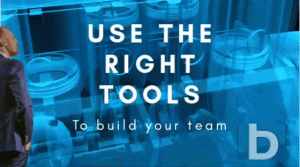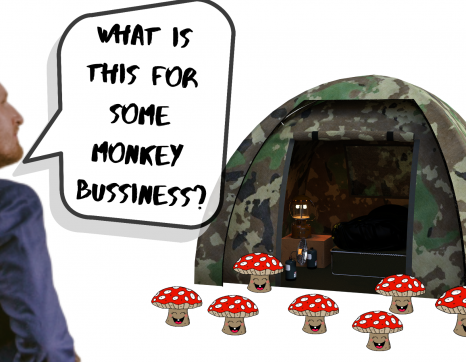
Corporate Team Building – Nytt Buzzord?
Teambuilding har blitt et buzzord i bedriftverdenens kretser de siste årene. Mange bedriftsarrangører og planleggere av teambuilding kaster begrepet 'teambuilding' rundt som en del av deres markedsføringsprat - men begivenhetene deres lever ikke alltid opp til teambuilding-løftet. For at et arrangement faktisk skal transformere og sementere nye måter å samarbeide på, må det tilby mer enn bare « eppeservice» i form av ord fra noen google søk og en gruppetur for å fiske på fluefiske.
Vellykkede teambuilding-arrangementer har en rekke elementer til felles:
1. Muligheten til å se hva som blokkerer for vellykket kommunikasjon og teamarbeid
2. Sjansen til å se medarbeidere i ukjente roller og situasjoner
3. Nødvendigheten av og utvikling mot å samarbeide mot et felles mål
4. Støtten som trengs for å skape produktive nye måter å samarbeide og bygge teamet videre på
Gode teambuildere tar disse kjipe og tørre konseptene og gjør dem til en morsom og nyttig læringsopplevelse. De sanne geniene i teambuilding verdenen kan skape fantastiske og transformerende arrangementer som vil ryste organisasjonen din og vekke inspirasjon som du aldri visste eksisterte i ditt firma. Erfarne planleggere av teambuilding-arrangementer vet hvordan de kan bringe dine kolleger og ansatte sammen på nye måter som fremhever styrkene du vet de har, og viser dem hvordan du bruker disse styrkene til å bygge et solid service- eller produksjonsteam som rett og slett ikke kan slås.
TeamBuild, et britisk selskap som spesialiserer seg på å bygge teams, workshops og gruppeevents. De forklarer at teambuilding-utfordringer kan være gunstige for å fremheve hvordan arbeidshindringer overvinnes ved å samarbeide. De tilbyr ved siden av sin vanlige praksis også turer i norsk natur, der en er nødt til å samarbeide mot felles mål.
Andre selskaper planlegger 'Servicedager' som kan omfatte å bygge en lekeplass for veldedighet eller gjøre noe for en lokal veldedighet. Uansett er dagens verdi i innholdet som tas med hjem på slutten - at et team kan overvinne hva som helst ved å bli kjent og samarbeide - som et team med unike medlemmer.

Tim has background as is business psychologist and work sociologist with expertise in building organisations and teams to solve problems for the future. Tim has expertise in technology and the symbiosis between human interaction and technology in operational processes.
Key metrics to measure in a team
6 Steps to Effective Communication.

Communication Smoothes the Path of Change
Produktiviteten lider nesten alltid i tider med stor endring, fordi ansattes stress dramatisk øker på grunn av den universelle frykten for det ukjente. I disse tider blir kommunikasjon viktigere enn noen gang.
Ofte tror toppledere virkelig at de kommuniserer med ansatte når det gjelder saker som berører dem. Dessverre undervurderer de ofte antallet saker som faktisk betyr noe, for det faktum er at de fleste beslutninger på høyt nivå vil påvirke ansatte på en måte eller en annen.
Så hvordan vet du hva som er viktig for ansatte og hva du skal fortelle dem? Vel, du må sette deg inn i posisjonen, sinnet, hjertet til de ansatte - en ansatt om gangen. Hvis du var den personen, hva ville du vært bekymret for akkurat nå i den nåværende situasjonen? Hva ville være viktig for deg å vite? Hva er det verste som kan skje, og vil du vite om det på forhånd? Hvordan vil du bli fortalt?
Selvfølgelig kan du ikke svare på disse spørsmålene selv. Du trenger innspill fra de menneskene du prøver å forstå. Avhengig av hvor mye du kan kommunisere deg frem til eller hvor mye som allerede er kjent, kan du spørre noen få individer om nøkkelpunkter, og hva folk bekymrer og lurer på.
Utform svarene på spørsmålene med denne informasjonen. Selvfølgelig må de være sannferdige svar, for oppriktighet blir lett gjenkjent og vil gi deg et solid sosial bonus for kommunikasjonsarbeidet ditt. Videre må de settes i ord som er klare og kompromissløse, men også hensynsfulle og medfølende. Det er verdt å bruke litt tid på denne delen av forpliktelsen til budskapet ditt, da er det også lett å lese og vil automatisk øke muligheten for å engasjere seg blant de ansatte.
I neste omgang kommer formidling av informasjonen. Det er, som vi alle vet, ingen mangel på kommunikasjonsteknologi i næringslivet. Imidlertid kan måten en person mottar nyheter dramatisk påvirke hvordan han eller hun føler om det, så du må velge mediet veldig nøye. E-post kan i mange tilfeller oppfattes som kaldt og lite følsomt, selv om det er nyttig for rutineoppdateringer som ikke har følelsesmessige overtoner. Noen meldinger formidles bedre ansikt til ansikt, enten av ledere til gruppene deres eller av administrerende direktør for hele organisasjonen.
Hvis de som bringer budskapet ikke har høyt utviklede kommunikasjonsevner, er det verdt å engasjere seg tjenestene til profesjonelle taleforfattere eller presentasjonstrenere for å hjelpe dem, men vær sikker på at meldingen forblir ærlig, tydelig og medfølende.
Og fremfor alt, følg med på dine forpliktelser og løfter. Ingenting slår av ansattes lojalitet mer enn tomme ord, men oppriktig, omsorgsfull, kontinuerlig kommunikasjon kan danne grunnlaget for å bygge ansattes engasjement når dagens uro er slutt.

Tim has background as is business psychologist and work sociologist with expertise in building organisations and teams to solve problems for the future. Tim has expertise in technology and the symbiosis between human interaction and technology in operational processes.
Key metrics to measure in a team
6 Steps to Effective Communication.
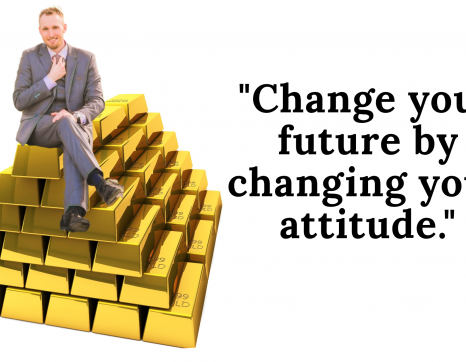
10 Måter Du Kommuniserer Holdninger
Målet med vellykket markedsføring er å skape langvarige relasjoner med potensielle kunder ved å markedsføre virksomheten din med lidenskap. Når du ikke er spent på hva du gjør, vil ingen andre være det heller. Vår lidenskap for det vi driver med i virksomheten kommuniseres gjennom vår holdning. Våre holdninger skinner gjennom på en rekke måter. Hvordan kan du skape en holdning som baner vei for suksess for deg og din virksomhet?
1. Du er det du snakker om. Ordene vi bruker sier alt om hvem vi er og hva vi handler om. Våre talte ord er sannsynligvis en av de mest åpenbare måtene vi kommuniserer vår holdning til andre på. Tenk på hva du sier før du snakker. Vil det tjene til å bygge forbindelse, fellesskap eller forhold til andre? Hvis ikke, bør du vurdere å si noe annet eller til og med si ingenting. Det er mye visdom i ordene ... ”hvis du ikke har noe hyggelig å si, ikke si noe i det hele tatt.”
2. Dress for successHvordan du kler deg og fargene du har på deg, kommuniserer mye om hvem du er. Finn klær som fremhever de beste funksjonene dine. Forsikre deg om at klærne dine er tilpasset situasjonen, pene og rynkefrie. Hvis det er nødvendig, kan du få hjelp av en personlig shopper som kan hjelpe deg med å velge klær som er stilige og passer for bildet du ønsker å kommunisere. Tenk på hvordan forskjellige farger passer på deg og hvordan de får deg til å føle deg. Bruk klær som du liker, slik at du føler deg bra og mer kraftfull i møte med potensielle kunder. Mens "klær ikke skaper noen person", sier de absolutt noe om hva vi tenker om oss selv og hva vi ønsker å projisere. Et godt tips er å tilpasse klær også til målgruppen din. Du ønsker ikke stå i en dress når du har et opplegg for håndverkere. Selvom en ofte kan tro at en da får en viss posisjon, så kan det så være. Men realiteten er at det skaper en distanse. Du ønsker å havne i noen in- gruppe, så tilpass deg til å være mer som gruppen du jobber mot.
3. Vær punktlig. "Punktlighet er sjelen til virksomheten." Å komme i tide til kundemøter, taleoppdrag, møter med leverandører eller noe annet du gjør i din virksomhet, viser at du respekterer andre. Respekt er grunnlaget for å skape gode langsiktige relasjoner med kundene dine. Å møte opp og i tide er en av de beste måtene å vise noen at du bryr deg om dem. Ved å holde dine forpliktelser overfor andre, erkjenner du dem og deres behov. Det å ta vare på kundene dine må være din prioritet siden det er gjennom forholdene du bygger virksomheten din. Ingen vet hvor mye du bryr deg før du viser dem ... ved å møte opp.
4. Svar på kommunikasjon flere ganger hver dag. I dag er e-post, sosiale medier, meldinger etc. de mest brukte kommunikasjons metoden. Gjør det til et mål å svare innen åttende time. Hvis du ikke kan svare på i løpet av denne tidsrammen, må du i det minste sende tilbake et svar om at du har mottatt personens e-post og at du vil svare innen en bestemt dato og et tidspunkt. La aldri folk lure på om du har mottatt e-posten deres eller ikke. Hvis du ikke svarer raskt, blir du oppfattet som ikke å være på toppen av ting, at du ikke er detaljorientert eller, verre, at du ikke bryr deg om kundene dine. Ikke nøl når det gjelder kommunikasjon. Sett av et par ganger om dagen når du kun vil konsentrere deg om å lese og svare på kommunikasjon. Merk at dette ikke gjelder alle, du ønsker ikke å gjøre deg tilgjengelig for alle. Det vil spise opp tiden din.
5. Returner samtaler innen få timer. Vi vet alle at tid er viktig å håndtere når det gjelder å drive forretninger. Forskjellen mellom å få en ny klient kan være avhengig av å returnere en telefonsamtale i tide. Du vet aldri når du kanskje savner en tidskritisk mulighet. En rask respons kommuniserer en holdning som du setter pris på å tjene andre og at du respekterer deres tid og frister. I dagens konkurransemiljø, hvis folk ikke får den umiddelbare oppmerksomheten de ønsker, er det lett for dem å oppsøke konkurrenten din. Unngå manglende muligheter for å utvide virksomheten din; planlegg to til tre ganger hver dag for å returnere samtaler.
6. Ta ansvar. Vi kommuniserer holdningen vår gjennom det ansvaret vi tar på oss selv. Folk kan føle når vi tar fullt ansvar for våre handlinger og de resulterende resultatene. Vi kommuniserer en aura av styrke, tillit og lederskap, noe som gjør oss enda mer attraktive for de menneskene vi gjør forretninger med. Tenk på hvordan du kan ta steget opp og ta enda mer ansvar for virksomheten din og resultatene du oppnår.
6. Ta ansvar. Vellykkede bedriftseiere er mennesker i aksjon. De venter ikke på at livet skal skje, de får livet til å skje. Å handle kommuniserer en holdning av spenning og prestasjoner, som andre synes er ekstremt attraktive. Handling forteller andre at du er en leder, at du beveger ting videre, at du kan få ting til å skje, og viktigst, at du er trygg på å gjøre det som må gjøres. Akkurat som folk ser på ting som beveger seg, ser de på folk som beveger seg.
8. Kroppsspråk. Sammen med ordene vi snakker, er kroppene våre sannsynligvis den neste mest åpenbare måten vi kommuniserer vår holdning til andre på. Det er som om vi går på reklametavler. Alt fra ansiktsbevegelser til måten du sitter på og plasserer armene og bena, kommuniserer volumet om hvem du er og din holdning til andre. Observer mennesker som viser positivt, åpent og imøtekommende kroppsspråk og prøver å etterligne dem. Les om kroppsspråk og lag en ny væremåte som representerer det du aller helst vil formidle.
9. Endre tankegangen din; endre holdning. Vi vet alle at tanker påvirker hvordan vi har det. De påvirker også ordene vi snakker så vel som kroppsspråket vårt. Våre tanker blir filtrene vi oppfatter verden gjennom. Ved å endre tankene endrer vi automatisk holdningen vår. Vi har tankene våre overalt hvor vi går. Sørg for at du viser det beste selvet hele tiden.
10. Smil. Et smil er det universelle tegnet på velkomst og vennskap. Ingenting varmer hjertet til en annen, smelter spenningen i en situasjon eller gir folk kjærlighet til oss, enn å levere et smil med oppriktighet. Øv på å smile til alle og alt. Innlemme det som en sunn vane. Ikke bare påvirker et smil andre, det påvirker automatisk hvordan du oppfatter alt rundt deg. Folk tiltrekkes av mennesker som får dem til å føle seg bra. Begynn å tiltrekke folk til deg og din virksomhet ved å ha på deg et smil.

Tim has background as is business psychologist and work sociologist with expertise in building organisations and teams to solve problems for the future. Tim has expertise in technology and the symbiosis between human interaction and technology in operational processes.
Key metrics to measure in a team
6 Steps to Effective Communication.

Behavioral Interviewing – An introduction
Have you ever wondered, while interviewing a candidate, how will you suspend your own personal biases during the interview? Well, if you have, you might want to read on and learn how to do just that.
Behavioral interviewing is a relatively new mode of job interviewing. Behaviour and attitude at the workplace is increasingly important, and we see an increasing amount of companies also implementing standards for how to map this in an interview. Behaviour interviewing can be an effective tool, and because an increasing numbers of employers are using behavior-based methods to screen job candidates, understanding how to excel in this interview environment is becoming a crucial job-hunting skill.
What is Behavior Based Interviewing? Behavior-based interviewing focuses on your past experiences, behaviors, attitudes, personal skills and capacities that are job-related. It is based on the belief that past behavior and performance predicts future behavior and performance. You may use work experience, outsides activities, hobbies, volunteer work, school projects, family life as examples of your past behavior. However we suggest to focus on job related performance as much as possible. And to also remember that attitudes can be trained to some degree. Attitudes for the root of behaviour, so we do belive that people can change, keep that in mind.
Behavioral Interviewing Questions. This is the key to matching behavioral interviewing questions with specific soft sills or competencies. Below is a short list of 22 competencies with their definitions, suggestions for effective interviewing hints and a sample question for each.
1. Conflict Management: Addressing and resolving conflict constructively.
• Listen for proactive identification and resolution of concerns and issues.
• Sample question: “Describe the most difficult conflict you’ve ever had to manage.”
2. Employee Development/Coaching: Facilitating and supporting the professional growth of others.
• Listen for a belief in the potential of others and promoting of learning and development.
• Sample question: “Describe your personal experience with a mentor or coach.”
3. Interpersonal Skills: Effectively communicating, building rapport and relating well to all kinds of people.
• Listen for self-awareness, understanding and an ability to communicate effectively with others regardless of differences.
• Sample question: “Describe the most difficult working relationship you’ve had with an individual.”
4. Teamwork: Working effectively and productively with other.
• Listen for a strong commitment and contributions to team members working towards a specific goal.
• Sample question: “Give me an example of one of the most significant contributions you made as a member of a high performing team.”
5. Self-Management: Demonstrating self-control and an ability to manage time and priorities.
• Listen for composure, assertiveness and emotional stability.
• Sample question: “Give me an example of when you were able to meet the personal and professional demands in your life, yet still maintained a healthy balance.”
6. Empathy: Identifying with and caring about others.
• Listen for genuine caring, compassion and initiative in assisting others without expectations of rewards.
• Sample question: “Give me an example of when you identified with someone else’s difficulties at work.”
7. Planning/Organizing: Utilizing logical, systematic and orderly procedures to meet objectives.
• Listen for logical, organized and systematic approaches.
• Sample question: “ Describe the most complex assignment or project you’ve worked on.”
8. Customer Service: Anticipating, meeting and/or exceeding customer needs, wants and expectations.
• Listen for extraordinary efforts in responding to customer needs and wants to insure satisfaction.
• Sample question: “ Give me an example of when you went out of your way for a customer.”
9. Written Communication: Writing clearly, succinctly and understandably. Look for clear and understandable knowledge or written communication.
Sample question: “Give me an example of something you wrote for work that was effective in achieving a communication goal.”
10. Presenting: Speaking effectively to small and large groups.
• Listen for awareness, accuracy and composure.
• Sample question: “ Describe a situation when you had to give a presentation to a group of people you have never met.”
11. Persuasion: Convincing others to change the way they think, believe or behave.
• Listen for persistence, determination and a “never-give-up” attitude in efforts to meet goals.
• Sample question: “Describe a situation where you were able to convince others to your way of thinking.”
12. Goal Orientation: Energetically focusing efforts on meeting a goal, mission or objective.
• Listen for the ability to maintain their direction in spite of obstacles in their path.
• Sample question: “Give me an example of the most significant professional goal you have met.”
13. Flexibility: Agility in adapting to change.
• Listen for a positive attitude towards lots of activity, multi-tasking and change, in general.
• Sample question: “Give me an example of when you were forced to change priorities or direction.”
14. Continuous Learning: Taking initiative in learning and implementing new concepts, technologies and/or methods.
• Listen for a positive attitude towards self-improvement, learning and the application of knowledge.
• Sample question: “How do you keep current on what’s going on in your field?”
15. Personal Effectiveness: Demonstrating initiative, self-confidence, resiliency and a willingness to take responsibility for personal actions.
• Listen for a strong sense of self, personal responsibility, courage and resilience.
• Sample question: “What do you think has enabled you to meet your goals?”
16. Problem Solving: Anticipating, analyzing, diagnosing and resolving problems.
• Listen for an analytical and disciplined approach to solving problems.
• Sample question: “Describe a situation when you anticipated a problem.”
17. Negotiation: Facilitating agreements between two or more parties.
• Listen for seasoned expertise in negotiating “win-win” agreements.
• Sample question: “Give me an example of when you were able to facilitate a “win-win” agreement between two or more adversarial parties.”
18. Management: Achieving extraordinary results through effective management of resources, systems and processes.
• Listen for shrewd business sense, understanding of operational issues and an ability to improve the bottom line.
• Sample question: “Describe the largest budget you’ve ever developed and had responsibility for managing.”
19. Leadership: Achieving extraordinary business results through people.
• Listen for an ability to obtain the trust, commitment and motivation of others to achieve goals and objectives.
• Sample question: “If you have held a leadership position in the past, draw the organizational chart above and below your position to illustrate the scope of your leadership responsibilities.”
20. Decision Making: Utilizing effective processes to make decisions.
• Listen for an ability to make timely decisions under difficult circumstances.
• Sample question: “Give me an example of when you had to make a quick decision when the risk of making an error was high.”
21. Futuristic Thinking: Imagining, envisioning, projecting and/or predicting what has not yet been realized.
• Listen for optimism, predictions and a commitment to future possibilities.
• Sample question: “Describe a situation when you were correct in seeing a future trend that others didn’t.”
22. Creativity/Innovation: Adapting traditional or devising new approaches, concepts, methods, models, designs, processes, technologies, and/or systems.
• Listen for “out-of-the-box” thinking and unusual approaches.
• Sample question: “ Describe a work situation when you adapted a concept, design, process or system to meet a need.”
Be sure to probe for as many details and specifics as possible such as names, dates and other verifiable information. Skilled interviewers will also ask candidates for their thoughts or feelings about a situation to gain further insight.
How Can I Prepare for A Behavioral Interview?
• Be familiar with the type of positions for which you’re applying. • Reflect on your own background. What skills do you have that relate to the job you are applying for?• Think of examples from your past experience where you demonstrated those skills. How can you give an example about your use of particular skills or knowledge? • Be prepared to provide examples of when results didn’t turn out as you planned. What did you do then? In hindsight, what would you do differently?• Identify two or three of your strengths and determine how you will convey these assets during the interview.• Once you land your desired position, keep a personal achievement diary to help document demonstrated performance.
How Do I Prepare For a Behavioral Interview If I Am The Interviewer or Company Hiring?
• If the job could talk; what would it say? About:- The behaviors of the person who will always be able to deliver superior performance?- The attitudes of the people doing the job?- The attributes or soft skills needed for superior performance?
• Job Benchmarking with a system such as Trimetrix, reveals why, how and what an individual can contribute to a job.
• It identifies a complete hierarchy of competencies or personal skills. It allows you to clarify any position issues. It prioritizes and validates the competencies required.
• This can be done for any:- Leadership/Management Exempt position- Professional Exempt position- Hourly non-exempt position
• Anytime you need an unbiased opinion about whether someone is right or wrong for the job, the computer will analyze the input of up to ten respondents to identify the importance of the 23 soft skills competencies.
• Where can you do this…through the Internet! Have up to ten respondents identify the importance of the 23 soft skills competencies and then see how your candidate matches up.
The premise behind behavioral interviewing is that the most accurate predictor of future performance is past performance in similar situations. Behavioral interviewing, in fact, is said to be 55 percent predictive of future on-the-job behavior, while traditional interviewing is only ten percent predictive.
Good luck with the process of Behavioral Interviewing and hope the concepts encourages you to use the Behavioral Interviewing questions provided in this article to get you started.

Tim has background as is business psychologist and work sociologist with expertise in building organisations and teams to solve problems for the future. Tim has expertise in technology and the symbiosis between human interaction and technology in operational processes.
Key metrics to measure in a team
6 Steps to Effective Communication.
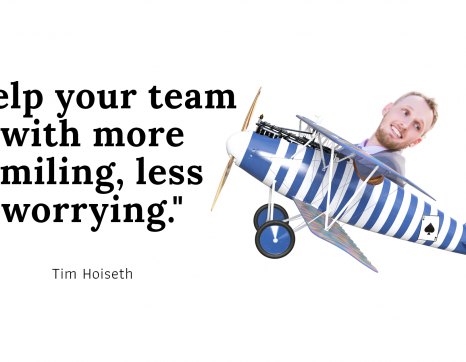
Work Life Balance And The Power of Positive Thinking
Can we learn how to respond optimistically and hopefully to events that challenge work life balance? According to psychologist and researcher Martin Seligman, the answer is YES. While some folks appear to be hardwired to respond optimistically to ups and downs in life and work, others are wired for pessimistic responses. Fortunately, you do not have to settle for the wiring you were born with. Find out how you can improve your resilience and hopefulness by acquiring positive thinking skills. Belive it or not, it will have an effect on your co-workers how you reach to things.
I like to think of the process of building hopefulness, resilience and positive thinking skills as an analogue to building physical fitness: it takes attention, concentration, commitment, and repetition. If you approach a workout program with those qualities, you can almost always improve your fitness.
The first hurdle to get over is the belief that you already need to be different in order to succeed. You don’t. You are the way you are and you can start from here, overwhelmed, worried, anxious, whatever. Don’t fall into your story about how you feel, but take a stand for what you intend to accomplish to restore your work life balance and where you plan to go. You do not need to feel better before you try these practices — do them now. Another caveat: Do not interpret your progress in the short term — measuring increase in strength and endurance after a single workout would be silly.
Seligman points out that people with an optimistic approach to life habitually accept positive thoughts and dispute negative thoughts. Those of us who are wired to be more pessimistic tend to dispute the positive and accept the negative. Optimists tend to assume that their life balance will be restored, good events will happen again and that bad events are an exception; pessimists assume the reverse. I am oversimplifying his rigorously considered arguments, and I encourage you to read the book if the science of this is important to you.
Here’s a practice he recommends for shifting from hopelessness to hopefulness. I successfully use it with my clients to help them restore their work life balance. He calls it ABCDE for:
Adversity — Beliefs — Consequences — Disputation — Energization.
A – Adversity: Start by spelling out the nature of the situation. Notice that you can experience hopelessness in response to ostensibly positive situations as well as to negative ones. For example, getting a new client or being accepted into a final round of interviews can upset your balance and send you into a whirlwind of anxiety and fear that produces just as much hopelessness and overwhelm as not getting the job or not making the cut.
B — Beliefs: This is your opportunity to spell out the thoughts and beliefs that are fueling the negative response.
C — Consequences: Look at the consequences of your beliefs — what happened as a result? How do you behave? What happened then?
D — Disputation: Actively dispute the beliefs that break your life balance and send you into the downward spiral. This is where you practice arguing with yourself in a productive way.
E — Energization: When you have been effective in disputing the problem beliefs, you feel an influx of energy, a sense of renewed hope, or at least of peacefulness.
So, here’s an example on how to handle a situation:
Adversity: Edward was excited about moving forward on two projects when he fell on his bike and cracked his ribs. He was okay and working hard with this for almost three days, then depression and anxiety set in and his usual positive thinking ability left him. Instead of feeling like moving forward he felt like bursting into tears.
Beliefs: How will he ever restore his work life balance and get things done if he can’t stop these mood swings? Maybe he is just not meant to lead these projects, he was thinking. He don’t know enough and he can’t seem to get started — he probably should have said no in the first place. It would be better to bow out now, as embarrassing as that will be, than to keep going and have a bigger train wreck later when I just can’t make the grade.
Consequences: These beliefs leave him feeling very sad and small, like a six year old he thinks, and then suddenly he wonders how a six year old can possibly be a leader. Brian find it hard to concentrate and just want to hide.
Disputation: Constant low-grade pain can take it out of anyone. The world is not going to come to an end if you delay things because you’ve been injured. And who says you have to do it alone anyway? Some of the problem is that you don’t have enough information to go forward. That calls for making requests of others, not for blaming yourself. And when you’re not leaning on yourself so hard, your positive thinking ability starts coming back and your mood lightens — so maybe it would be smart to cut yourself some slack this week after letting folks know what is going on. You don’t have to crawl under a rock — you can reach out instead to restore your work life balance. And even if some work projects end up being passed on to others, there will always be other opportunities.
Energization: Brian called and emailed colleagues to regroup. Not only did these conversations relieve his anxiety, they made simple next steps quite clear. In one case, my summary of a conversation ended up being exactly what our group needed to move forward. Who knew? Brian had been worried about making things happen on his own when all along his strength was in articulating and clarifying complex input from many sources.
See how this works? I do strongly recommend implementing a positive way of thinking in your work life. If you struggle with hopelessness and challenge yourself to work through this one exercise on a regular basis (and if that means five or ten times a day, so be it), your positive thinking skills will grow and you WILL get relief. Remember — don’t measure change before it can happen — keep doing the practices long enough for significant positive shifts to take root and grow.

Tim has background as is business psychologist and work sociologist with expertise in building organisations and teams to solve problems for the future. Tim has expertise in technology and the symbiosis between human interaction and technology in operational processes.
Key metrics to measure in a team
6 Steps to Effective Communication.
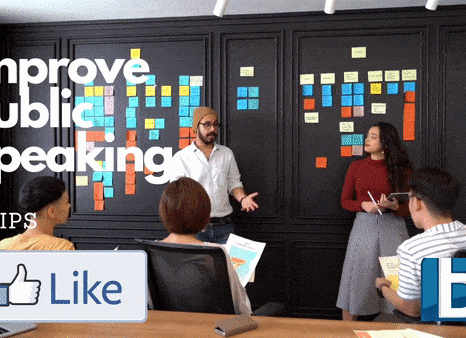
Public speaking: 5 Tips to improve your Public Speaking
Among a number of fears possessed by the people today, public speaking tops the list. Having to talk about something in front of a huge number of people where everyone has their focus on you can make you a bit shaky and nervous. This is a general problem with a majority of the people. But, in today’s world if you want the people to know what you are up to, you have to practice speaking in front of the public. Look around and see you can recall the name of the people who made it big in their own field by recalling what they spoke. Therefore, you can see that how much speaking in front of the public is important.
In order to improve your communication skill when you are standing in the middle of a huge crowd of people and giving out lectures, you need to follow 5 basic tips for improving your oratory skills:
5 tips:
1) Do a lot of Homework
This essentially means practicing in private so that you can perform better in front of the people. Practice in front of the mirror as if you are talking to someone, practice in front of your closest friend who will rectify you without being too critical. Practice well so that you can get the entire subject matter by heart. In that case you won’t have to make up a story when you are up on the dais. “Practice makes a man perfect” as the popular proverb goes, repeatedly rehearsing will make you a perfectionist in the speech you will be delivering and if you prepare well, then you are bound to enthral the audience with your speech.
2) Be a good listener
One of the astounding element that can make you am exceptional speaker is listening. Listen to how other people say, how they communicate their message. Listen to what your audience say or want you to answer. The more actively you listen to what other say, the more you will be able to be a good speaker. It is true, that not everyone holds a rich opinion, but somehow you will be getting a clue out of them which can make you prepare well for your forthcoming speech.
3) Record and Watch
Do a video recording of your speech instead of taking a selfie. Then play the video a number of times to pinpoint what are the basic flaws you are having while you are talking. This is a bit painful, but nonetheless important, as this will help you in self-evaluation. You will be able to rectify your speech. You will see using a lot of extra and unnecessary vocabularies like, “ok, just, umm, like” and many more. These words hinder you from delivering the exact message in a clear way. Repeated recording and watching your own videos will help a lot in improving your diction and speech.
4) Honesty
Be honest when it comes to improving yourself. There is no better way than to being honest to yourself and think of putting your best efforts to reach the zenith. Nobody is telling you to be the unbeaten champion in public speaking, but you should be able to convey your message clearly without a fail. And while doing this, honesty is something you need to possess.
5) Get a hold of your subject and audience
When you are making a speech on something, you should do a good homework to know the topic you are dealing with. For example, if you are delivering a speech on the retail or food industry, you must know every detail of the industry. Another thing you must consider is knowing your audience. You must know whom you will be talking to. Make presentations by keeping that in mind. Keep such substances in your subject which will evoke responses from your audiences.
In addition to the above points, another point can be added to this. There is no harm in carrying the notes you prepared for your speech. In case you lose out some points or can’t remember what you were to tell, you can keep the notes handy and have a look at them. Don’t worry, your audience won’t react to that.
By following the above points, you can surely aim to become a professional speaker.

Tim has background as is business psychologist and work sociologist with expertise in building organisations and teams to solve problems for the future. Tim has expertise in technology and the symbiosis between human interaction and technology in operational processes.

